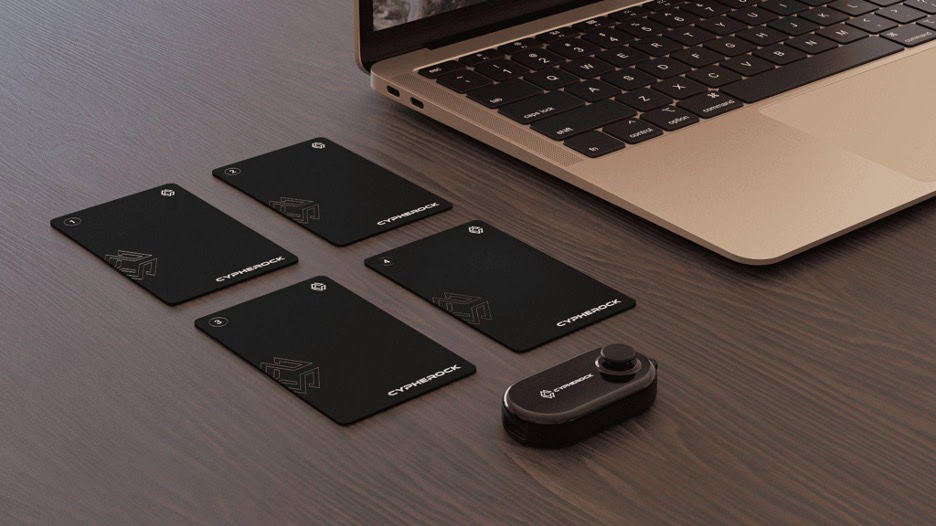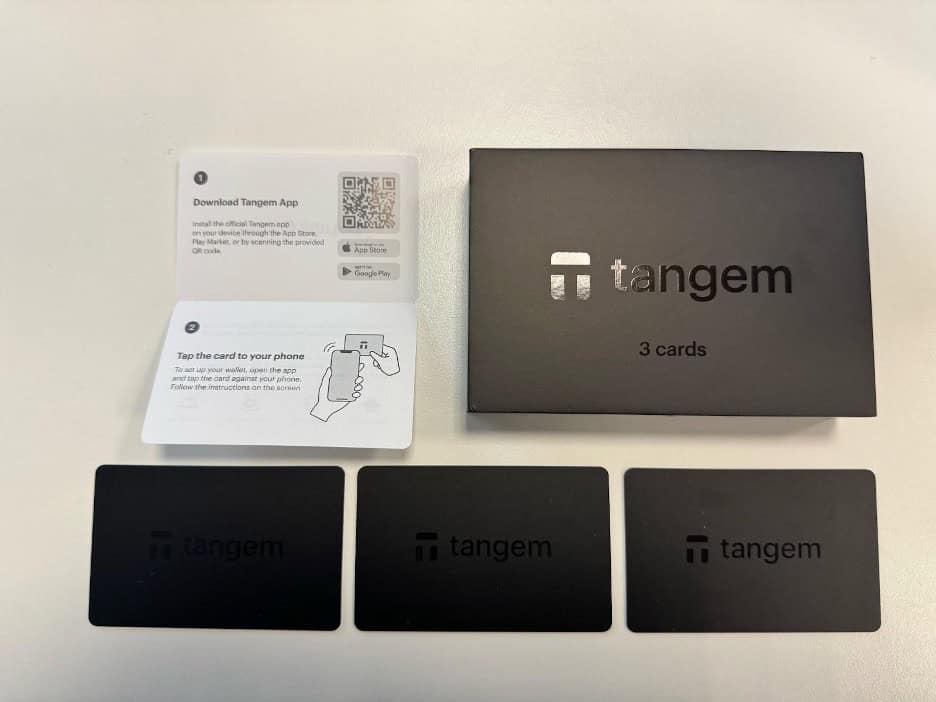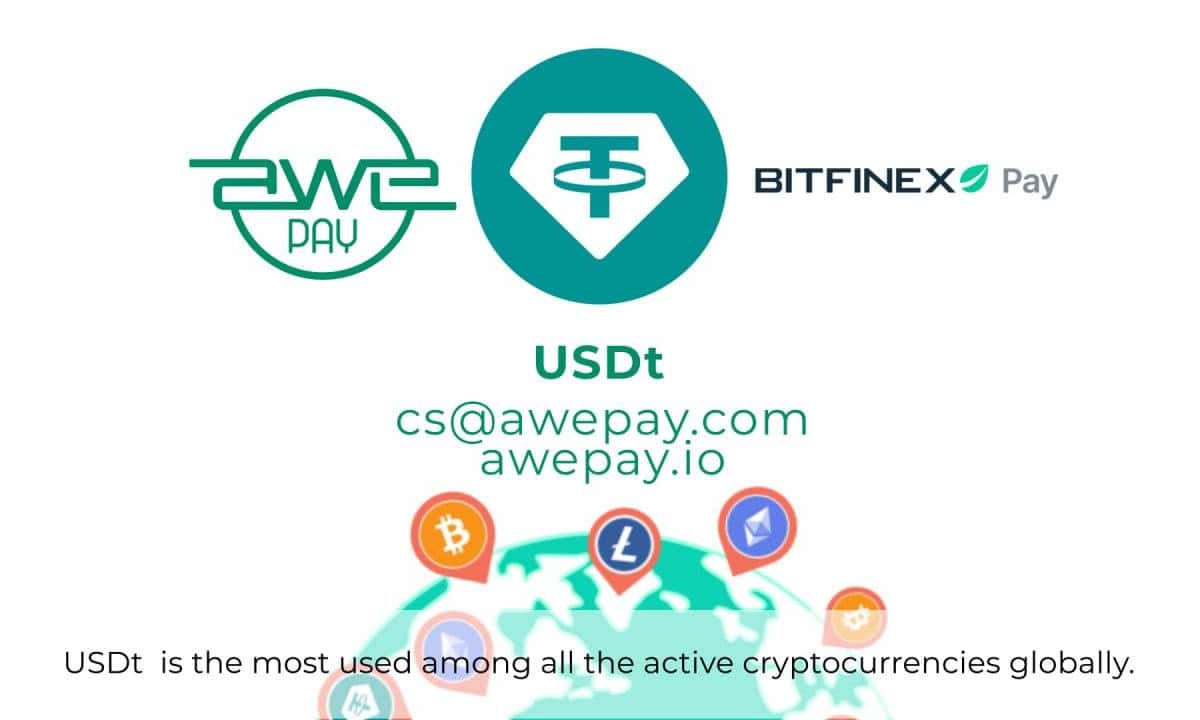Best Hardware Wallets 2024: Top 5 Crypto Cold Storage Picks
As the old adage goes: “not your keys, not your coins,” and people have definitely paid the price for not owning their private keys and leaving their funds in custodial wallets or cryptocurrency exchanges.
In 2013, two crypto users decided to create a small, pocket-size computer that could store their Bitcoin’s private keys. Those two crypto users are Pavol Rusnák and Market Slush, who launched Trezor and its flagship product, Trezor One —the first Bitcoin hardware wallet ever created.
Fast-forward to 2024, we’ve come a long way in the development of hardware wallets, and constant innovations come from major manufacturers that have perfected the art of cold storage.
Only a few hardware wallets can make the cut, and that’s why we’ve decided to write a comprehensive guide on the best cold storage solutions in the market, considering important factors like security, usability and functionality, price, and others.
So, without any further ado, let’s jump into understanding everything there is about hardware wallets and which are the best ones to consider.

Quick Navigation
- What is a Hardware Wallet?
- Best Hardware Wallets – Top 5 Cold Storage Options
- Trezor Safe 3
- Cypherock X1
- BC Vault
- Ledger Nano S Plus
- Tangem Wallet
- Choosing a Hardware Wallet – Factors to Consider
- Tips for Using Hardware Wallets Safely
- Frequently Asked Questions
- Best Hardware Wallets – Final Thoughts
What is a Hardware Wallet?
A hardware wallet, also known as cold storage, is a physical device used to securely store the private keys needed to access and manage cryptocurrency assets. It can look, weigh, and feel like a USB, although some companies have opted for a different design.
Unlike software wallets, which are connected to the internet and thus more susceptible to malicious attacks like hacking and exploits, hardware wallets keep your private keys offline, mitigating the aforementioned risks. That doesn’t mean there are no drawbacks, but let’s first talk about their benefits:
Security
Hardware wallets are convenient for those who want to store their private keys offline, significantly reducing the risk of hacking and enhancing privacy and security.
Ownership
Your private keys are generated and stored within the hardware wallet, and it’s not owned by it or any third-party application. Some wallets even use tamper-resistant chips for added protection.
Support for multiple cryptocurrencies
Hardware wallets can support hundreds or thousands of cryptocurrency coins and tokens.
However, if we can highlight one crucial benefit of modern hardware wallets, that would be the transaction signing process. Even though a hardware wallet remains offline, you can still sign transactions using the manufacturer’s website application, or if the wallet comes with a card, you can use that too to spend your crypto.
That’s because certain cards come with NFC antennas, allowing transaction details to be scanned using the vault (which are called vaults —i.e., the actual cold storage device), which signs it offline. That means your private keys are never exposed.

In conclusion, a hardware wallet is a mini computer that fits in your pocket and provides all the basic functions you need to store and manage your crypto assets, but in a much safer way.
Hardware wallets are undoubtedly safer than hot wallets, but this doesn’t mean they’re perfect. The main drawbacks of hardware wallets are the lack of flexibility, functionality, higher costs, and others. We’ll take a more in-depth look at the pros and cons of hardware wallets in another section so you can consider the crucial factors before buying one.
Let’s look at the best hardware wallets to pick in 2024 without further ado.
Best Hardware Wallets – Top 5 Cold Storage Options
The following wallets were chosen based on innovation, functionality, and the number of supported cryptos.
Trezor Safe 3
Trezor Safe 3 is one of the most recognizable Trezor products. It features advanced security with Secure Element, a certified EAL6+ chip.

Trezor Safe 3 prioritizes privacy, supports the anonymous web browser Tor, and uses Coinjoin to anonymize Bitcoin transactions. Moreover, it’s compatible with Shamir backup, a security standard that allows you to create multiple recovery methods for your private keys. Trezor commonly uses this Standard in its hardware models, including the Trezor Model T.
Related: CryptoPotato’s podcast with the CEO of Trezor – Matej Zak.
It’s not just about privacy and security, however. This powerful model supports over 8,000 coins and tokens, significantly expanding Trezor’s cryptocurrency offerings and outranking practically every other hardware wallet. Its starting price is $79, which is considerably cheaper than other Trezor models.
Safe3 is also one of the best Bitcoin hardware wallets. Trezor offers a limited-edition Bitcoin-only version that is easily identifiable due to its black and orange design.

Key features of Trezor Safe 3
- Supports over 8,000 cryptocurrency assets
- EAL6+ chip for more advanced security
- Supports Tor and Coinjoin
- Shamir backup compatible
- Compatible with: operating systems such as Linux, Microsoft, and Mac and for mobile devices on iOS and Android through the Trezor Suite Lite app
Supported Cryptocurrencies
As previously mentioned, Trezor Safe 3 supports over 8,000 coins and tokens, including the most popular crypto assets by market cap —Bitcoin, Solana, Ethereum Cardano, Ripple, Binance Coin— as well as ERC-20 and SLP tokens. However, note that Cosmos and Avalanche are not supported, for no apparent reason yet.
You can also integrate your Safe 3 with third-party software wallets, including Exodus, MetaMask, and some of the best Cardano wallets like Yoroi.
Pros and Cons of Trezor Safe 3
Pros explained
- It is more flexible than other Trezor models
- Cheaper starting price
- Integrates Shamir backup security
- Integrates a dedicated security chip —EAL6+
Cons explained
- No touchscreen
- Lacks support for popular networks like Cosmos and Avalanche
Cypherock X1
Cypherock is an innovative hardware wallet that stands out from the crowd for its approach to security, design, and functionality. Its flagship product is the Cypherock X1, which comes with two components:
- X1 vault: the main device for storing crypto assets and signing transactions. It has an OLED display and a joystick for navigation.
- X1 cards: four cards with Near Field Communication (NFC) antennas, allowing users to sign transactions using the X1 vault. These cards are tamper-proof and leverage bank-grade encryption —meaning they use encryptions similar to banks, such as the Advanced Encryption Standard (AES).

While the Cypherock X1 is relatively new —launched in December 2022— users have praised its highly secure and user-friendly design, which addresses common vulnerabilities associated with traditional seed phrase backups.
Instead of private keys, Cypherock splits your private key into four shards, and each X1 Card holds a unique shard of your private key. This also eliminates the single point of failure if, for instance, someone steals your wallet or gets access to one part of your private keys.
Key features of Cypherock X1
- Similar to Trezor Safe 3, the X1 allows users to leverage Shamir backups to recover their private keys.
- It’s EAL6+ certified and comes with bank-grade hardware components
- Supports over 3,000 cryptocurrency coins and tokens
- Compatible with multiple blockchain networks
- Comes with a vault and four cards with NFC antennas
- Can be connected with dozens of software wallets through Wallet Connect
Supported cryptocurrencies
Cypherock X1 supports over 3,000 cryptocurrencies, including Bitcoin, Ethereum, Solana, and token standards such as ERC-20, SLP, and BEP-20.
Additionally, the wallet supports Avalanche, Cosmos, Polygon, and all EVM-compatible blockchains.
Pros and Cons of Cypherock X1
Pros explained
- Recovery phrases can be extracted
- High-end security with EAL6+ and bank-grade encryption
- Flexible, dynamic, and Intuitive design
- Shamir backup compatible
Cons explained
- Its price is more expensive than other wallets in the market
- Plastic build
BC Vault
All the hardware wallets listed in this article have implemented innovative and robust security mechanisms and components to ensure reliability and the highest level of safety for their users. However, BC Vault will arguably inspire the most confidence.
BC Vault is a hardware wallet that supports millions of cryptocurrencies and all blockchains. That’s right —millions of coins and all blockchain networks, even testnets, layer-2s, NFTs, memes, you name it. Its parent company is REAL Security, a Slovenian-based cyber-security firm founded in 2002 and a leader in IT security.
According to its website, almost everyone on the REAL Security team has a technical background in fields such as computer engineering, security, electrical engineering, and mathematics. Therefore, its reputation and trajectory go beyond cryptocurrency assets and blockchain technology.
Regarding security, BC Vault does not use mnemonic seed phrases. It uses an SD card or QR code backup. Further, the wallet uses a random number generator coupled with non-deterministic algorithms to create private keys for each account created (you can create up to 2,000 accounts with BC Vault). This eliminates another single point of failure and ensures that no wallet is mathematically linked.
Another perk of BC Vault is that you can set a Global PIN and password for an extra layer of security. Without these, the device will not respond to any key requests. In total, the following passwords and PINs are available. Keep in mind you can use any combination you prefer, but at least one method should be used to encrypt all your data properly:
- Global Password: Used along with the Global PIN to unlock access to BC Vault. Entered in the application.
- Global PIN: Used along with the Global Password to unlock access to BC Vault. Entered on the device.
- Wallet Password: Used along with the Wallet PIN to send currencies from individual wallets. Entered in the application.
- Wallet PIN: Used along with the Wallet Password to send currencies from individual wallets. Entered on the device.
You can even customize the look of your device, which is a nice touch if you’re paying over 130 Euros for it.

Key features of BC Vault
- Thanks to FeRAM storage, your data can be stored for up to 200 years.
- True Random Number Generator: BC Vault generates private keys using a true random number generator, which increases their security and unpredictability.
- In-Wallet Swap Feature: You can swap assets within the wallet thanks to BC Vault’s integration with Changelly.
- WalletConnect Integration: The wallet supports WalletConnect, allowing you to interact with multiple dApps and DeFi platforms.
- Compatibility: BC Vault is compatible with Windows, macOS, and Linux desktop applications and supports browsers like Firefox, Chrome, Opera, Safari, and Internet Explorer.
- Large OLED Display: BC Vault features a 2.42-inch OLED display, making it easier to navigate and use than other hardware wallets.
- Multi-Language Support: BC Vault supports multiple languages, including German, Chinese, Slovenian, and English.
Supported cryptocurrencies
BC Vault claims to support all cryptocurrency coins and tokens in existence, including NFTs, on different blockchain networks, such as Ethereum, Polygon, BNB Chain, Cosmos, Avalanche, and more. You can also find all types of token standards: TRC-10, TRC-20, ERC-20, ERC-721, SLP, BEP-20, etc.
You can check out BC Vault’s Supported Cryptocurrencies page for more information.
Pros and Cons of BC Vault
Pros explained
- Supports virtually all cryptocurrencies and blockchain networks, including NFTs and Layer-2s
- High-end security coupled with multiple safety combinations
- Customizable design
- Long-term storage, up to 200 years
- Multi-language support
- In-wallet exchange
- Provides access to DeFi applications
Cons explained:
- Not open-source
- More expensive than other wallets in the market
Ledger Nano S Plus
The Ledger Nano S Plus is a hardware wallet designed for the secure storage of cryptocurrencies and non-fungible tokens (NFTs). It provides mass storage for over 5,500 digital assets and is also one of the best DeFi wallets.
Regarding security, the Nano S Plus is a CC EAL5+ certified hardware wallet that incorporates an exchange to manage your funds on the go. It also has a touchscreen, making it more dynamic and easier to manage than the Nano X model.
 While the Nano S Plus is quite similar to Ledger’s Nano X, there are certain differences to consider. The Nano S Plus supports over 5,500 cryptocurrencies, costs $79, and is compatible with Android, while the Nano X is compatible with both Android and iOS.
While the Nano S Plus is quite similar to Ledger’s Nano X, there are certain differences to consider. The Nano S Plus supports over 5,500 cryptocurrencies, costs $79, and is compatible with Android, while the Nano X is compatible with both Android and iOS.
Key features of Ledger Nano S Plus
- The Nano S Plus is compatible with over 50 wallets for accessing DApps, different cryptocurrency assets (including NFTs), and even Web3 applications.
- Supports up to 100 apps installed on the device and over 5,500 compatible crypto assets.
- It features Secure Element, a CC EAL5+ certified chip. It’s also independently certified by ANSSI, which refers to the National Agency for the Security of Information Systems in France, which highlights a product’s robustness.
- Unlike the Ledger Nano X, the Nano S Plus does not have Bluetooth or a battery. It measures 62.39mm x 17.40mm x 8.24mm, has a screen resolution of 128×64 pixels, a USB-C connector, and weighs 21 grams.
Supported Cryptocurrencies
Ledger Nano S Plus supports over 5,500 cryptocurrency coins, tokens, and even NFTs. It can securely manage and store some of the most popular assets, including Bitcoin, Ethereum, Cardano, Solana, Avalanche, Stellar, and more. It also supports different types of token standards, including:
- ERC-20
- ERC-721
- TRC-20
- TRC-10
- BEP-2
- SLP
You can check Ledger’s database to see if any of the supported assets can be staked, swapped, or connected with other wallets. You can also read our complete Ledger Nano S review.
Pros and Cons of Ledger Nano S Plus
Pros explained
- Secure, CC EAL6+ certified hardware wallet
- Supports over 5,500 digital assets
- Smaller and cheaper than Nano X and other Ledger wallets.
Cons explained
- No Bluetooth connection
- Seed phrase recovery feature requires KYC (Know your Customer) checks
- Does not support iOS devices
Tangem Wallet
Tangem Wallet has gained recognition as one of the best cold storage wallets due to its robust security design and simplicity. It supports over 6,000 digital assets across more than 30 blockchain networks.

Instead of a USB, Tangem’s design comes as a credit-card-size device with private keys divided into multiple cards, eliminating the single risk of failure —but without a vault, like Cypherock’s X1. In other words, the card is the cold storage. It does not come with a screen or buttons because everything is controlled through the Tangem mobile app, which allows users to initiate transactions and manage the wallet entirely.
It’s also very cheap, with the three-card set costing $69.
Tangem Wallet offers a high level of security, backed by a 25-year warranty, and comes with an EAL6+ certification, ensuring stringent security measures through sophisticated engineering and a rigorous development process. It’s also been independently audited by Riscure and Kudelski Security.
The wallet generates the private keys, which are stored within the card itself, adding an extra layer of protection against unauthorized access. Similar to Cypherock, Tangem allows recovery as long as the user has one of the cards, the app, and their pin/passcode.
Key features of Tangem Wallet
- High-end security: Tangem Wallet features an EAL6+ certified chip and secure element, offering a high level of security comparable to a biometric passport.
- User-friendly: The Tangem app has an intuitive interface, providing a seamless and user-friendly experience.
- Battery-free: Similar to Cypherock, Tangem’s cards use NFC technology, requiring no batteries or charging to make continuous and convenient use.
Supported cryptocurrencies
Tangem Wallet supports over 6,000 cryptocurrency coins and tokens, including Bitcoin, Ethereum, Litecoin, Cardano, and Dogecoin. It also supports a vast number of blockchains, including Avalanche, Cosmos, Ethereum, and BNB Chain, as well as all EVM-compatible networks and layer-2s like Arbitrum and Optimism.
Pros and Cons of Tangem Wallet
Pros explained
- Affordable and comes with a 25-year warranty
- Simple design and easy set-up
- NFC-enabled cards
- EAL6+ certified and has been independently audited by several blockchain firms
- Beginner-friendly
Cons explained
- Lack of advanced features, such as multi-sig capabilities, dApp, and exchange integrations
- No desktop support
Choosing a Hardware Wallet – Factors to Consider
There are at least six crucial factors to consider when choosing a hardware wallet. Let’s break them down below:
Security Features
Look for wallets with secure element chips, EAL certification (preferably EAL6+), and state-of-the-art encryption. Check if the wallet offers protection against physical tampering (if it’s shipped, consult if the package comes with such as tamper-evident tape) and secure methods for generating and storing private keys.
Multi-Factor Authentication (MFA)
Wallets usually allow you to set up a PIN code, biometric authentication, passphrases, etc. Make sure you at least have one set up.
Open-Source Software
Open-source software allows the community to inspect the code for vulnerabilities. If a hardware wallet is not open-source, it’s not the end of the world. Sometimes, the firmware on the devices is not open-source, but certain components or applications related to the wallet might be. Ledger and BC Vault are not open-source, yet they are some of the most secure and best cold storage wallets.
Backup and Recovery
Check if the wallet provides reliable backup and recovery processes, such as a seed phrase or encrypted backups.
Track Record
It doesn’t hurt to look for reviews from real users (not bots) and independent sources to gauge the reliability and security of the wallet.
Usability, Design, & Price
Ease of Use: If you’re a beginner, you should go for a wallet with a user-friendly setup process and an intuitive interface.
Display and Controls
While self-explanatory, a clear display and easy-to-use controls —buttons or touchscreen— help verify and confirm transactions and other functionalities within the wallet.
Compatibility
Remember that not all wallets are compatible with all operating systems. Therefore, make sure the wallet supports Windows, macOS, Linux, Android, iOS, or any other devices you plan to use it with.
Battery and Connectivity
Check if the wallet requires a battery and what types of connectivity it supports (USB, Bluetooth, NFC). These factors can affect the convenience and usability of the device.
Price
Check your budget. Hardware wallets can cost from $50 to north of $400, depending on the brand, model, specifications, etc.
Supported Cryptocurrencies & Integrations
Range of Supported Coins
Verify that the wallet supports the cryptocurrencies you plan to store and manage. Some wallets might claim to support thousands of coins, but those types of claims should be taken with a grain of salt.
Range of Supported Blockchains
Now, say you have found a wallet with the coins you need, but they’re limited to specific blockchains you do not intend to transact with. Make sure the wallet you’re choosing supports the network(s) you wish to use.
Integrations
If you’re a more advanced crypto user, you might benefit from wallets that integrate exchanges and DeFi applications that allow you to put your assets to work and earn rewards.
Tips for Using Hardware Wallets Safely
Now that you have in mind what to think before buying a hardware wallet, let’s give you some tips on how to use it safely:
- Remember that hardware wallets might come in a credit card-size device or a USB port. Either way, they’re small and thin and prone to getting lost if you leave them lying around. Make sure you store them in a secure, room-temperature environment.
- Never share your seed phrases or passwords with anyone. A manufacturer will never contact you and ask you for your credentials and recovery phrases.
- Make sure you set up a PIN, a password, or a combination of booths (if permitted).
- Backups are a must. Make sure you back up your recovery seed phrase using the manufacturer’s instructions. If possible, make multiple backups and store them in different secure locations. It’s good to test your recovery phrases with a spare wallet periodically.
Related: 9 Tips For Securing Your Bitcoin and Crypto Wallets You Must Follow
Frequently Asked Questions
Are hardware (cold) crypto wallets 100% safe?
There is no such thing as 100% safe when it comes to crypto, but then again, that’s also true for keeping your money at the bank (banks can go bankrupt). However, hardware wallets are the safest way to store your cryptocurrencies compared to all other storage solutions out there.
Can a hardware wallet get hacked?
Yes, but only provided you fail to maintain proper security protocol. If you never connect it to the internet, it can’t get hacked online. However, if you connect it to a phishing website, then, obviously, it can get compromised.
Can a hard wallet fail?
Hardware wallets are known to be extremely reliable, and there aren’t many instances of failure. However, it’s still an electric device, so there’s always that possibility. In this case, your seed phrase backup becomes the key to recovering your funds – that’s why it’s critical to safeguard it properly.
What happens if a hardware wallet dies?
If a hardware wallet dies, you can use the backup of your seed phrase to restore your funds. Make sure always to keep a backup at a safe and secure location.
Best Hardware Wallets – Final thoughts
We’ve reached the end of our extensive guide on the best hardware wallets to check in 2024, which covered new market participants and veterans like Ledger and Trezor.
All of these wallets offer unique solutions and innovations to cold storage crypto management, as well as their fair share of pros and cons. But remember, the best cold storage wallet is the one that fits your necessities —and budget.
The post Best Hardware Wallets 2024: Top 5 Crypto Cold Storage Picks appeared first on CryptoPotato.









